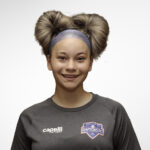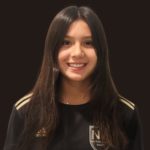Tiki-taka in Dunk City: Florida Gulf Coast soccer lays foundation for sustainable success
SEATTLE — Before training, Florida Gulf Coast University players have five minutes to themselves. Players are never shy about blowing off steam before the serious work starts, but the ways this team passes time without a coach’s instruction take far more skill than smashing a ball on goal with no warm-up.
Two groups of keep-away develop, players using a maximum of two touches to move the ball around a tight circle while two defenders chase. Others form juggling circles, while three players try to pass a ball down the football hashmarks on the turf for as long a distance as possible.
“Some of these guys play 5-v-2 on another level,” head coach Bob Butehorn says, looking over his players’ impromptu skill session from a short distance. The customary whoops and hollers echo throughout the indoor football and track facility on the University of Washington campus as players nutmeg and otherwise embarrass one another.
After a few minutes, Butehorn begins training. The goalkeepers break off into their own group with coach Alec Dufty, while the others perform partner passing exercises and possession work in tight spaces. Butehorn shouts constant reminders to “keep the rhythm,” trying to get a long day of travel out of the players’ legs and repeat an important element in the team’s style of play.
It’s early in the 2013 season, and FGCU has made the cross-country trip to play Washington and Seattle University over a weekend. The Eagles were supposed to arrive early the day before their first match and train that night, but after sitting on the tarmac in Chicago for three hours, the coaching staff decided to hold a light session the morning of game day instead.
“It’s going to be a season of adventure, it seems,” Butehorn says. “We’ll see how they respond.”
In FGCU’s short time as a program, it’s been so far, so good in that department. The Eagles won four Atlantic Sun Conference regular-season and three tournament championships in a row before losing to North Florida, 2-1, in the semifinal on Friday. FGCU has never finished lower than first and had never lost a conference tournament match before that, advancing to the NCAA Division I tournament in both of its first two seasons of eligibility.
The Eagles completed their move from Division II in 2011 after a four-year transitional state of limbo between divisions. FGCU started women’s soccer and swimming and diving programs at the same time, while 12 teams existed prior to 2007.
FGCU’s 2012-13 success in men’s basketball put Ft. Myers, Fla., on the map. The Eagles became the first No. 15 seed in March Madness history to advance to the Sweet 16, entertaining and converting fans with their high-tempo style that led to the town being nicknamed “Dunk City.”
“Immediately, we went from F-G-C-who? to FGCU,” Butehorn says. “Now, everybody knows where Ft. Myers is, what the school’s like. ‘Hey, you’ve got a beach on campus. That’s pretty cool.’ ”
It should be easy to attract good athletes to Ft. Myers. Average highs reach into the mid-70 degrees throughout the winter months. A small beach on Lake Como lies within shouting distance of the FGCU Soccer Complex.
“You get a kid, let’s say for example, these kids out here [in the Pacific Northwest],” Butehorn says. “We bring them on an official visit in November. They come from here and go down there. It’s 80 degrees. It’s perfect. The field is pristine. You play 365 days a year. It’s always sunny. We’re in shorts and flip-flops. It’s almost a 40-1 ratio of girls to guys. I mean, come on.”
Perhaps as a result, FGCU boasts multiple successful athletic programs: the women’s basketball team put together two consecutive perfect conference seasons, going 36-0 in 2011-12 and 2012-13; fall sports swept the Atlantic Sun regular season championships in 2012; and overall, the Eagles have won 33 conference regular-season and tournament crowns.
* * *
As the final whistle blows on FGCU’s 5-0 loss to No. 6 Washington, those Atlantic Sun titles feel very distant. Two days later, Seattle defeats the Eagles in overtime, capping an 0-5-1 start to the season.
Matches at Pennsylvania and Princeton remain before conference play starts, and Butehorn is reminded just how young his team is this season. With 10 freshmen and 10 sophomores on a senior-free roster, the coach tries to keep everything in perspective.

Head coach Bob Butehorn (gray hoodie) addresses the FGCU team after a brief training session in the Dempsey Indoor Facility at University of Washington. (Photo: Liviu Bird/SoccerWire.com)
“We’re a team that’s kind of in the point of trying to figure out the identity. When you’re caught in that, and you haven’t won, you feel [overwhelmed],” he says. “These guys know that we’re not that far off, but we have to put the right pieces in.”
The basis for the team’s identity is obvious. Of the 26 players, the vast majority is of Latin American descent: three Guatemalans, one Colombian, one Brazilian, one Mexican and multiple first-generation Americans litter the roster.
“I’m not going to fight what I get in Florida, which is more of a Latin flavor,” Butehorn says. “I’ve got to use that to my advantage and use it because I’ve got access to it. It doesn’t mean it always works. We can go with speed, but for me … [the goal is] pushing the game to have more cerebral, more technical players, learning to unlock parts of the field.”
Flashes of creativity and attractive attacks are there, even against physically overpowering teams comprising mostly upperclassmen, such as Washington. Butehorn says, “To a fault, we try to play,” but it doesn’t sound like a lamentation. Early in the season, on the back of a six-game winless streak, he knows his team’s only option for postseason play is to start clicking in time to win the conference again.
“We’ve been a team that’s figured out how to get ourselves in spots to win championships,” he says. “We know our only route in is through our conference. So, fair enough. That’s what we’ve identified as: this is a process; it’s not a sprint; we’ve got to get to that spot; when we get to that spot, then it’s time to show up.”
His team appears to have heard him. After conceding eight goals in two games in Seattle, the Eagles rattled off six wins in a row and only lost once in the Atlantic Sun regular season before falling short in the conference semifinal. The team will not make a third consecutive appearance in the post-season, but Butehorn’s boys will be back with a similar approach in 2014.
“It’s either stupidity, stubbornness, or that I understand that’s the way we’ve got to drive the game if we’re going to make it more attractive,” Butehorn says. “For example, I got three emails from kids that came to the [Washington] game that are all very good players up here. … Each one of them said, ‘Coach, I like your style. I know the game wasn’t the result you wanted, but I like your style.’ And they want to come learn.”
* * *
Butehorn has a history of turning programs into winners. In 1995, he took over a St. Bonaventure side that won two games the previous season. By the time he left in 1999, the Bonnies had won a school-record 12 games in 1997, and he finished with a 34-32-4 overall record as coach.
Taking the job at Florida Gulf Coast marked a new type of challenge. He had already reversed a program’s downward trend; could he build one from scratch and make it successful?
“To kind of bring a program out of the ground was pretty intriguing, especially in Florida, especially with where it was located and being a state school,” he says at the team hotel in Seattle. “The expectations get higher, the way the teams play against you gets higher, the caliber of player that you get becomes a level two or three or four times higher. … We’re a young program, but we demand the respect because we’ve done so well.”
That level of respect will only increase as the program surpasses more milestones, such as winning its first NCAA tournament match. In 2011 and 2012, the Eagles came up against Central Florida and narrowly lost to the state’s traditional powerhouse program both times, 1-0 in extra time the first year and 5-3 in penalties the second.
“My goal was to have the community understand what good soccer looked like, my team understand what it’s supposed to be played like, and that it’s more of a thinking game than they ever would have imagined,” he says. “That was my goal going into it: I had a chance to … leave a long-lasting impression not only on the program and my guys, but on an area, and then hopefully have it around the country.”
As he talks, several players crowd around a television on the opposite side of the lobby, watching Manchester United and Manchester City play, half the world away.
“That’s what kids look at,” he says, glancing in their direction. “They don’t watch the college game as much as they watch the pros, and the pros are playing a style — in general — that has a level of skill that is demanding. I think if we continue to just grow athletes and a direct style, we are like the old English game: we’re going to stay behind it.”
Butehorn lambasts the lack of skill at all levels of the American game, from college to Major League Soccer. With its location in Florida, where many professional teams hold preseason preparations, FGCU has gotten a first-hand look at that level of play, earning good results (NCAA programs do not publicize offseason scores, but FGCU has tied and won several games) against MLS teams while fielding younger, less experienced collegiate players.
“If we can kind of string some passes together, if we can get something kind of identified out there as our style of play against that type of level, then we’re making progress,” Butehorn says.
Eagles players have started to move abroad, forgoing the end of their collegiate careers to turn professional and marking another measure of success for the program at the next level. Defender Daniel Stanese signed with FC Nürnberg in the German Bundesliga, and midfielder Cristian Raudales with BSV Schwarz-Weiß Rehden. Stanese, who moved on to FC Augsburg after signing with Nürnberg following his freshman year, became the first FGCU player selected to a national team when he was an unused substitute in Canada’s 3-0 loss to Australia on Oct. 15.
Those successes show Butehorn that although his team may lose a few games along the way, he is doing the right thing for the future of the American game by emphasizing attractive, possession-based soccer over a win-at-all-costs strategy of direct play.
“It might not be perfect now, but if they have those ideas … their whole game perception of how the game should look has changed,” Butehorn says. “So I’ve made a ripple effect. … I have won. I’ve proven that it can win [games], and I’ve proven that it’s attractive.”











